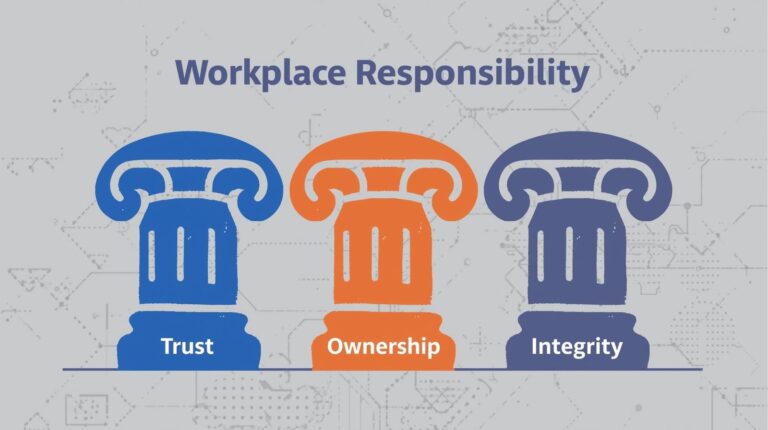Managing the Change: How to Navigate Leadership Transitions Successfully
Succession planning is more than identifying future leaders—it’s about managing the change that comes with leadership transitions. Even the best succession plan can fail if the organization isn’t prepared to handle the human, cultural, and operational shifts that accompany new leadership.
Change can be disruptive. Employees may feel uncertain, resist new leadership styles, or worry about their own future roles. For organizations, these transitions can affect performance, client relationships, and morale. Effective change management ensures that the succession plan doesn’t just exist on paper—it translates into smooth transitions, confident leaders, and a resilient workforce.
In this article, we’ll explore strategies for managing change during succession planning, including communication, constructive feedback, growth encouragement, and fostering a supportive environment.
Why Change Management Matters in Succession Planning
Leadership transitions are a type of organizational change—and all change comes with challenges. People naturally resist the unfamiliar, especially when it affects their roles, responsibilities, or the dynamics of their teams.
Effective change management during succession planning helps organizations:
Minimize disruption: Smooth transitions prevent lapses in productivity or service quality.
Maintain morale: Clear communication and support reduce anxiety and uncertainty among employees.
Promote engagement: When people feel informed and involved, they are more likely to embrace new leaders and processes.
Ensure knowledge transfer: Change management creates opportunities for mentoring, training, and sharing critical knowledge.
Without careful change management, even a well-prepared succession plan can result in disengaged employees, stalled initiatives, and leadership gaps.
Developing a Change Management Plan
A successful succession plan should include a formal change management component. A change management plan outlines the steps, communication strategies, and support systems needed to guide employees through the transition.
Key elements include:
Assessing Readiness: Understand how employees perceive the upcoming changes and identify areas of concern.
Defining Roles and Responsibilities: Clarify who is accountable for guiding the transition, communicating updates, and supporting staff.
Planning Communication: Determine the channels, frequency, and messaging for announcements, updates, and feedback.
Setting Milestones: Establish key dates for leadership transitions, training completion, and feedback sessions.
By preparing a structured plan, organizations can anticipate challenges and reduce uncertainty for both employees and incoming leaders.
Developing a Communication Plan
Communication is the backbone of effective change management. People respond better to change when they understand what is happening, why it’s happening, and how it affects them.
Effective communication during succession planning involves:
Transparency: Share the rationale for leadership changes and the objectives of the succession plan.
Consistency: Ensure messages are uniform across departments and channels to avoid confusion.
Timeliness: Provide updates at key stages, from announcement to implementation, rather than letting uncertainty fester.
Two-Way Dialogue: Allow employees to ask questions, provide input, and share concerns.
A clear communication plan reassures staff, reduces resistance, and fosters a culture of trust during transitions.
Providing Constructive Feedback
Change management is not only about top-down communication—it also involves guiding employees and new leaders through feedback. Constructive feedback helps people adjust to new responsibilities, expectations, and team dynamics.
Effective feedback during leadership transitions should be:
Specific: Focus on observable behaviors and outcomes, not personal traits.
Balanced: Include both positive reinforcement and areas for improvement.
Timely: Provide feedback close to the event or behavior to encourage learning.
Action-Oriented: Offer guidance on how to improve or adapt moving forward.
By embedding feedback into the transition process, employees and leaders can grow into new roles confidently, reducing anxiety and improving performance.
Encouraging Growth and Development
A leadership transition is an opportunity for growth—for both incoming leaders and employees. Encouraging development during change ensures that succession planning strengthens your talent pipeline while maintaining organizational performance.
Strategies include:
Mentoring and Coaching: Pair incoming leaders with experienced mentors to accelerate readiness.
Training Programs: Offer workshops, e-learning, or shadowing opportunities to build necessary skills.
Stretch Assignments: Assign projects that challenge employees and develop leadership competencies.
Recognition and Support: Celebrate milestones and offer encouragement to maintain morale during transitions.
When growth is prioritized, succession planning becomes a positive transformation, not just a procedural exercise.
A Practical Illustration: Managing Leadership Change
Consider a financial services firm where the CFO plans to retire. The organization has identified a successor, but employees are anxious about the change.
The HR and executive team implement a comprehensive change management plan:
They communicate early, explaining the timeline, the successor’s qualifications, and the objectives of the transition.
They provide mentoring support for the incoming CFO, pairing them with the outgoing leader for hands-on guidance.
They offer training workshops for staff impacted by the leadership change, ensuring smooth adaptation to new reporting structures.
They schedule regular check-ins and feedback sessions to address concerns and monitor morale.
By managing the change thoughtfully, the firm transitions leadership seamlessly, maintains employee confidence, and ensures operational continuity.
Overcoming Resistance to Change
Resistance is natural, but it doesn’t have to derail succession planning. Common sources of resistance include fear of job security, uncertainty about new leadership styles, or skepticism about the plan’s effectiveness.
Strategies to overcome resistance include:
Early Engagement: Involve employees in discussions and decisions where possible.
Clear Expectations: Explain what is changing, why it’s necessary, and how it will benefit the organization and individuals.
Support Systems: Provide mentoring, coaching, or counseling to help employees navigate change.
Feedback Mechanisms: Create channels for employees to voice concerns and suggestions, ensuring they feel heard.
Resistance decreases when employees feel informed, supported, and involved in the transition process.
Monitoring Progress During Transitions
Change management isn’t a one-time effort—it requires ongoing monitoring and adaptation. Key indicators to track include:
Employee engagement and morale
Performance metrics and productivity levels
Leadership readiness and competence
Team collaboration and cohesion
Regular reviews allow adjustments to the plan, ensuring that both employees and leaders remain aligned with organizational goals.
The Long-Term Benefits of Managing Change Effectively
Organizations that manage leadership transitions thoughtfully enjoy significant long-term benefits:
Business Continuity: Operations remain stable even during major leadership changes.
Employee Confidence: Staff trust the process and feel secure in their roles.
Leadership Development: Incoming leaders gain experience and confidence with support.
Organizational Resilience: Teams adapt quickly to new structures, strategies, and priorities.
Effective change management transforms succession planning from a procedural task into a strategic advantage, positioning the organization for long-term success.
Final Thoughts
Managing change is the bridge between a well-developed succession plan and successful leadership transitions. By creating a structured change management plan, communicating transparently, providing constructive feedback, and fostering growth, organizations can navigate transitions smoothly.
Succession planning doesn’t end when a successor is identified—the real work begins in managing the change that accompanies new leadership. Done well, it strengthens your talent pipeline, maintains employee engagement, and ensures that the organization continues to thrive, even in the face of leadership shifts.
Remember, change can be challenging, but it also presents a unique opportunity to build resilience, confidence, and capability across your organization. Effective management of change ensures that your succession plan delivers not just continuity, but sustainable growth.



